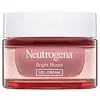What's inside
What's inside
 Key Ingredients
Key Ingredients

 Benefits
Benefits

 Concerns
Concerns

 Ingredients Side-by-side
Ingredients Side-by-side

Water
Skin ConditioningGlycerin
HumectantDicaprylyl Ether
EmollientPentylene Glycol
Skin ConditioningPolyglyceryl-6 Distearate
EmulsifyingNiacinamide
SmoothingPropanediol
SolventCetyl Esters
EmollientJojoba Esters
EmollientCetearyl Isononanoate
EmollientSqualane
EmollientBehenyl Alcohol
EmollientAdenosine
Skin ConditioningCapryloyl Salicylic Acid
ExfoliatingHydroxyacetophenone
AntioxidantMineral Salts
Skin ConditioningSodium Hyaluronate
HumectantTrisodium Ethylenediamine Disuccinate
Vitreoscilla Ferment
Skin ConditioningTocopherol
AntioxidantAcacia Decurrens Flower Cera
EmollientAcrylamide/Sodium Acryloyldimethyltaurate Copolymer
Emulsion StabilisingCetyl Alcohol
EmollientHelianthus Annuus Seed Cera
EmollientHydroxypropyl Starch Phosphate
Isohexadecane
EmollientPolyglycerin-3
HumectantPolyglyceryl-3 Beeswax
EmulsifyingPolysorbate 80
EmulsifyingSodium Stearoyl Glutamate
CleansingSorbitan Oleate
EmulsifyingWater, Glycerin, Dicaprylyl Ether, Pentylene Glycol, Polyglyceryl-6 Distearate, Niacinamide, Propanediol, Cetyl Esters, Jojoba Esters, Cetearyl Isononanoate, Squalane, Behenyl Alcohol, Adenosine, Capryloyl Salicylic Acid, Hydroxyacetophenone, Mineral Salts, Sodium Hyaluronate, Trisodium Ethylenediamine Disuccinate, Vitreoscilla Ferment, Tocopherol, Acacia Decurrens Flower Cera, Acrylamide/Sodium Acryloyldimethyltaurate Copolymer, Cetyl Alcohol, Helianthus Annuus Seed Cera, Hydroxypropyl Starch Phosphate, Isohexadecane, Polyglycerin-3, Polyglyceryl-3 Beeswax, Polysorbate 80, Sodium Stearoyl Glutamate, Sorbitan Oleate
Water
Skin ConditioningDimethicone
EmollientGlycerin
HumectantMandelic Acid
AntimicrobialTriethyl Citrate
MaskingGluconolactone
Skin ConditioningAcetyl Glucosamine
Skin ConditioningHydroxyethyl Acrylate/Sodium Acryloyldimethyl Taurate Copolymer
Emulsion StabilisingPolyacrylate Crosspolymer-6
Emulsion StabilisingButylene Glycol
HumectantSqualane
EmollientAluminum Starch Octenylsuccinate
AbsorbentSodium Hydroxide
BufferingPhenoxyethanol
PreservativeDimethicone Crosspolymer
Emulsion StabilisingCetearyl Olivate
Dimethiconol
EmollientSorbitan Olivate
EmulsifyingChlorphenesin
AntimicrobialCetearyl Alcohol
EmollientPolysorbate 60
EmulsifyingSuccinoglycan
Skin ConditioningCoco-Glucoside
CleansingDisodium EDTA
Parfum
MaskingEthylhexylglycerin
Skin ConditioningSilica
AbrasiveTin Oxide
AbrasiveTitanium Dioxide
Cosmetic ColorantMica
Cosmetic ColorantCI 16035
Cosmetic ColorantWater, Dimethicone, Glycerin, Mandelic Acid, Triethyl Citrate, Gluconolactone, Acetyl Glucosamine, Hydroxyethyl Acrylate/Sodium Acryloyldimethyl Taurate Copolymer, Polyacrylate Crosspolymer-6, Butylene Glycol, Squalane, Aluminum Starch Octenylsuccinate, Sodium Hydroxide, Phenoxyethanol, Dimethicone Crosspolymer, Cetearyl Olivate, Dimethiconol, Sorbitan Olivate, Chlorphenesin, Cetearyl Alcohol, Polysorbate 60, Succinoglycan, Coco-Glucoside, Disodium EDTA, Parfum, Ethylhexylglycerin, Silica, Tin Oxide, Titanium Dioxide, Mica, CI 16035
Ingredients Explained
These ingredients are found in both products.
Ingredients higher up in an ingredient list are typically present in a larger amount.
Glycerin is already naturally found in your skin. It helps moisturize and protect your skin.
A study from 2016 found glycerin to be more effective as a humectant than AHAs and hyaluronic acid.
As a humectant, it helps the skin stay hydrated by pulling moisture to your skin. The low molecular weight of glycerin allows it to pull moisture into the deeper layers of your skin.
Hydrated skin improves your skin barrier; Your skin barrier helps protect against irritants and bacteria.
Glycerin has also been found to have antimicrobial and antiviral properties. Due to these properties, glycerin is often used in wound and burn treatments.
In cosmetics, glycerin is usually derived from plants such as soybean or palm. However, it can also be sourced from animals, such as tallow or animal fat.
This ingredient is organic, colorless, odorless, and non-toxic.
Glycerin is the name for this ingredient in American English. British English uses Glycerol/Glycerine.
Learn more about GlycerinSqualane is an emollient that helps the skin hold onto moisture. It's an oily liquid that occurs naturally in certain types of fish and plant oils.
Because squalane boosts hydration in the skin, it also comes with plenty of benefits: it is an antioxidant and can help fight free radicals and skin damage. Squalane is also found to have a detoxifying effect when applied.
Squalane comes from squalene, which occurs naturally within the sebum of our skin. It is one of the oils our skin produces to keep itself hydrated. Squalane is the hydrogenated version of squalene and has a longer shelf life.
Research shows that squalane is non-irritating (even at 100% concentration).
In general, it's a fantastic ingredient. It does a great job at hydrating the skin, and it's suitable for those with sensitive skin.
The source of squalane may impact malassezia / fungal acne. This is because olive oil derived squalane can contain impurities such as fatty acids and plant waxes. Sugarcane derived squalane is recommended for anyone with malassezia concerns.
Is squalane vegan?
This depends on the source. Squalane can be derived from both plants and animals. Most squalane used in skincare comes from plants.
Please note: the source of squalane is only known if disclosed by the brand. We recommend reaching out to the brand if you have any questions about their squalane.
Read more about squalene with an "e".
Is squalane an oil?
Squalane is often called an oil, but it’s technically not; it’s a hydrocarbon, meaning it’s only made of carbon and hydrogen, unlike true oils which are triglycerides made of fatty acids and glycerol.
The term “oil-free” isn’t regulated, so companies can define it however they want. Some exclude all oils, while others just avoid mineral oil or comedogenic oils.
While some people avoid oils thinking they cause breakouts, the right kind of oil (or oil-like ingredient like squalane) can actually help balance and hydrate your skin. It’s worth testing out simple oils or squalane to see what works best for your skin.
Learn more about SqualaneWater. It's the most common cosmetic ingredient of all. You'll usually see it at the top of ingredient lists, meaning that it makes up the largest part of the product.
So why is it so popular? Water most often acts as a solvent - this means that it helps dissolve other ingredients into the formulation.
You'll also recognize water as that liquid we all need to stay alive. If you see this, drink a glass of water. Stay hydrated!
Learn more about Water